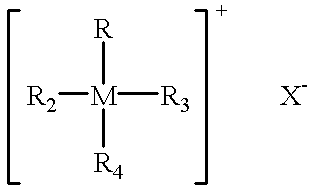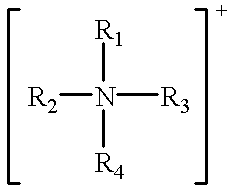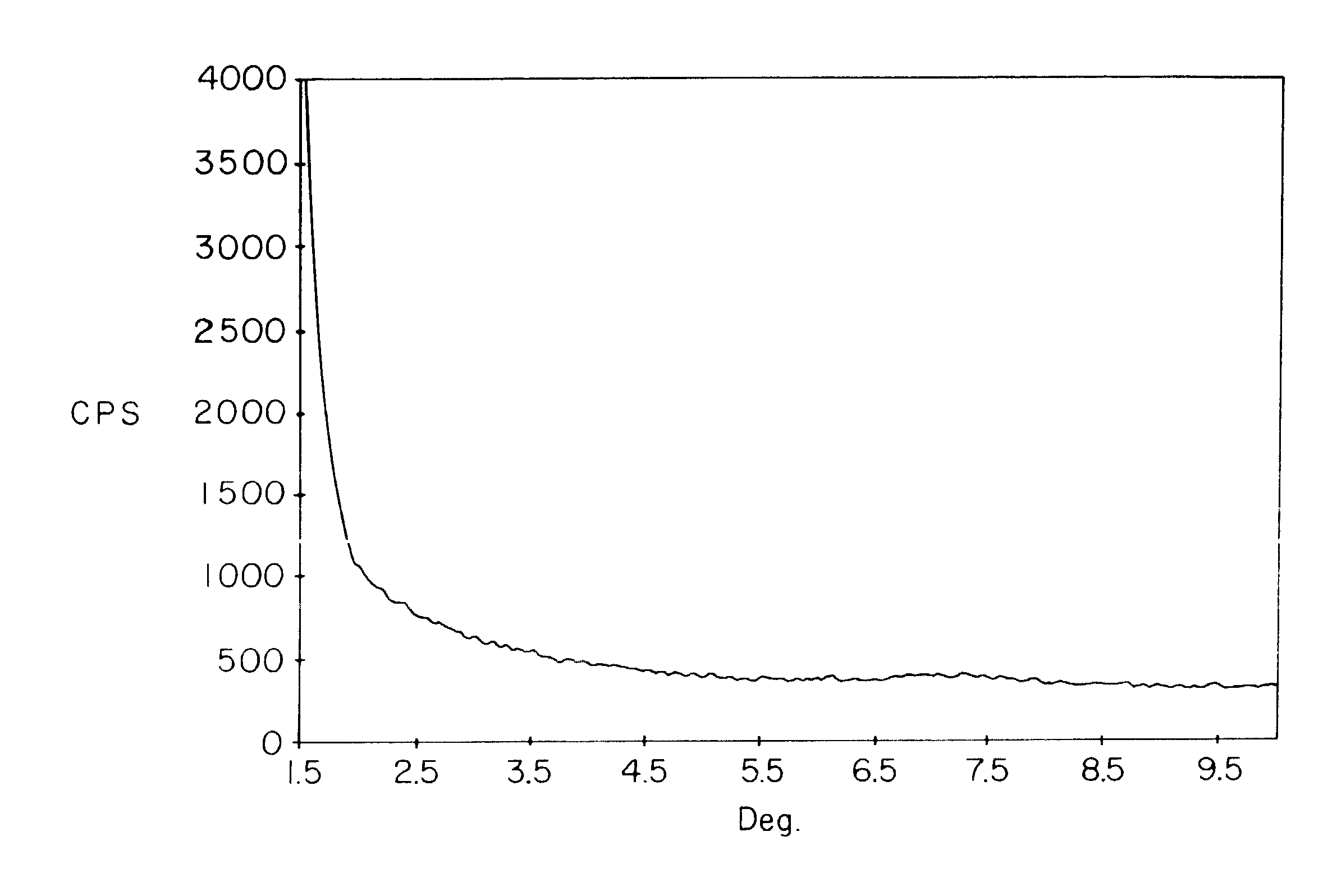Polyester/platelet particle compositions displaying improved dispersion
a technology of polyester and platelet, applied in the field of polyester/platelet particle compositions displaying improved dispersion, can solve the problems of product spoilage, product spoilage, product limited application of this technology to polyesters, particularly to improve barriers
- Summary
- Abstract
- Description
- Claims
- Application Information
AI Technical Summary
Problems solved by technology
Method used
Image
Examples
example 1 (
Na-Montmorillonite with AQ 55)
An AQ 55 dispersion was made, such that, every 100 grams of dispersion contained thirty grams AQ 55 total solids by weight and seventy grams Millipore water by weight, giving a total solids in the dispersion equal to 30% by weight. A "slurry" of Millipore water and clay was made by adding forty grams (total silicate by weight) of Sodium Montmorillonite to 600 grams of Millipore water. The clay was dispersed with a three-blade mixer until the clay appeared to be fully wet. At this point an Ultra-Turrax 25 with the S25n-25F dispersing tool was used to input high shear mixing (18,000 rpm) for two minutes. After high shear mixing of the slurry, 266.7 grams of AQ55 (Eastman Chemical Company) 30% dispersion was added to the slurry. Using the Ultra-Turrax 25, the water / AQ 55 / clay dispersion was sheared for an additional five minutes. PET pellets (9921, Eastman Chemical Company), 1680 grams, were placed in a Sigma Blade Mixer that had been preheated to a minimu...
example 2 (
Polymer Intercalated Montmorillonite with AQ 55)
An AQ 55 dispersion was made, such that, every 100 grams of dispersion contained thirty grams AQ 55 total solids by weight and seventy grams Millipore water by weight, giving a total solids in the dispersion equal to 30% by weight. A "slurry" of Millipore water and clay that had been intercalated with Polyvinylpyrollidone (PVP) (30wt % intercalant polymer to clay, Nanomer PVP-BPW, from Nanocor, Inc) and spray dried to a fine powder, was made by adding twenty grams (total silicate by weight) of intercalated Montmorillonite to 600 grams of Milliporc water. The clay was dispersed with a three-blade mixer until the clay appeared to be fully wet. At this point an Ultra-Turrax 25 with the S25n-25F dispersing tool was used to input high shear mixing (18,000 rpm) for two minutes. After high shear mixing of the slurry, 266.7 grams of Eastman Chemical Company AQ55 30% dispersion was added to the slurry. Using the Ultra-Turrax the water / AQ 55 / cla...
example 3 (
Quaternary Ammonium Modified Montmorillonite with AQ 55)
An AQ 55 dispersion was made, such that, every 100 grams of dispersion contained thirty grams AQ 55 total solids by weight and seventy grams Millipore water by weight, giving a total solids in the dispersion equal to 30% by weight. A "slurry" of Millipore water and clay was made by adding forty grams (total silicate by weight) of quarternary modified Montmorillonite (Claytone APA supplied by Southern Clay Products) that had been surface modified using a H-tallow, benzyl, dimethyl ammonium chloride to 600 grams of Millipore water. The clay was dispersed with a three-blade mixer until the clay appeared to be fully wet. At this point an Ultra-Turrax 25 with the S25n-25F dispersing tool was used to input high shear mixing (18,000 rpm) for two minutes. After high shear mixing of the slurry, 266.7 grams of Eastman Chemical Company AQ55 30% dispersion was added to the slurry. Using the Ultra-Turrax 25 the water / AQ 55 / clay dispersion w...
PUM
| Property | Measurement | Unit |
|---|---|---|
| weight % | aaaaa | aaaaa |
| weight % | aaaaa | aaaaa |
| weight % | aaaaa | aaaaa |
Abstract
Description
Claims
Application Information
 Login to View More
Login to View More - R&D
- Intellectual Property
- Life Sciences
- Materials
- Tech Scout
- Unparalleled Data Quality
- Higher Quality Content
- 60% Fewer Hallucinations
Browse by: Latest US Patents, China's latest patents, Technical Efficacy Thesaurus, Application Domain, Technology Topic, Popular Technical Reports.
© 2025 PatSnap. All rights reserved.Legal|Privacy policy|Modern Slavery Act Transparency Statement|Sitemap|About US| Contact US: help@patsnap.com



